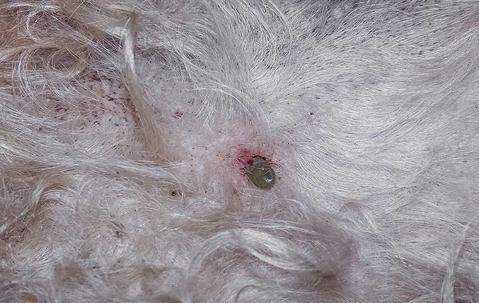Ticks are bothersome pests that require a blood meal to survive. These creepy little creatures are a type of arachnid. While you commonly find them during the hot summer months, they don’t always go away as soon as the summer ends. In Conroe, the tick season can last through October and, sometimes, November.
At Chase Pest & Termite Control, our Conroe tick exterminators have been providing a wide range of pest control services in this area for over 20 years. We know the habits and behaviors of the ticks in this area and what you can expect from these tiny arachnids throughout the year.
The Life Cycle Of Ticks: A Comprehensive Overview
All ticks start as an egg. Female ticks are known for their ability to lay a lot of eggs at one time. On average, a female tick can lay 500 to 5,000 eggs at a time. The eggs can look slightly different depending on the species. However, they all typically measure less than one millimeter, have a spherical or oval shape, and are pale yellow or cream colored.
A few weeks after the tick lays the egg, it will hatch, and a larva will emerge. The tick larva looks like a smaller version of an adult tick. During this stage, the tick only has six legs, and they usually have dark-colored bodies no bigger than a poppy seed. Many people call these ticks “seed ticks” due to their small size. A tick larva will need to eat shortly after hatching from its egg. It could starve to death if it cannot find a blood meal within a few days. However, if it can find a host, it can continue to feed until it is able to grow and molt into a nymph.
When a tick enters the nymph stage, it will usually be double the size it was in the larva stage. The pupa tick has eight legs and is close to reaching full maturity. It will need to find another or use the same blood host from its larva stage to reach full maturity.
It can take some ticks in Conroe a few months to complete all four life cycles, and it can take other ticks several years before they reach full maturity. Ticks can bite during all stages of life after they have hatched. Nymphs and adult ticks can spread dangerous diseases, so you should consult an experienced tick exterminator when you first spot these ticks on your property.
The Dangers Of Tick-Borne Diseases: Risks And Symptoms
Ticks can carry a variety of harmful pathogens that they get from drinking the blood of an infected animal. They can pass these diseases and viruses to you if they bite you.
Some of the different diseases that local tick control experts have seen ticks spread include:
- Rocky Mountain spotted fever
- Tularemia
- Ehrlichiosis
- Lyme disease
- Powassan virus disease
Each of these illnesses has its own set of symptoms. But they all typically include fever, nausea, and weakness. If you start to notice that you feel unwell a few days or a few weeks after getting bit by a tick, you should seek medical help and call a professional pest control specialist specializing in tick lawn treatments.
Tick Prevention: Remedy Factors That Attract Ticks To Your Property
Professional tick control is the best solution to most tick problems. However, there are a few things that you can do to help keep the ticks away from you and your pets. Some of the best preventative steps include keeping your grass cut short, limiting the amount of shaded areas in your yard, and keeping flea and tick medications on your pet all year.
Professional Tick Control Services: Stress-Free And Effective
At Chase Pest Control, we understand that there is no one-size-fits-all solution for tick infestations. Our Conroe tick control takes the time to thoroughly inspect your yard and find out why the ticks are attracted to your property. We will then devise a customized plan to eliminate the current ticks occupying your yard and prevent any more ticks from coming back. Give us a call today to get your free quote and schedule your inspection.

